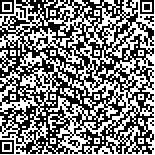| Quote
: |
李璎峪,文雯,刘红宇,李世雄,赵靖,李原华,刘文龙.双黄连注射剂及参麦注射液类过敏反应的剂量相关性研究[J].湖南中医药大学学报英文版,2022,42(11):1843-1848.[Click to copy
] |
|
| |
|
|
| This paper
:Browser 1882times Download 1164times |
| 双黄连注射剂及参麦注射液类过敏反应的剂量相关性研究 |
| 李璎峪,文雯,刘红宇,李世雄,赵靖,李原华,刘文龙 |
| (湖南中医药大学第一附属医院, 湖南 长沙 410007;湖南中医药大学药学院, 湖南 长沙 410208;中药成药性与制剂制备湖南省重点实验室, 湖南 长沙 410208) |
| 摘要: |
| 目的 研究双黄连注射剂及参麦注射液类过敏反应的发生及其与给药剂量的相关性。方法 首先进行双黄连注射剂及参麦注射液致敏剂量考察,将64只ICR雄性小鼠分为对照Ⅰ组、阳性Ⅰ组及双黄连组(低、中、高组)、参麦组(低、中、高组),每组8只。确定致敏剂量后进行类过敏反应验证实验,分为对照Ⅱ组、阳性Ⅱ组、双黄连高组、参麦高组,每组16只,共64只。分别于10、30 min两个时间点采血,对各组进行检测。对照组小鼠一次性尾静脉注射生理盐水,阳性组小鼠一次性尾静脉注射Compound48/80试液,药物组一次性尾静脉注射相应剂量的药物,其中64只剂量考察ICR小鼠对照药及受试药含0.4%伊文思蓝。以小鼠全身类过敏反应行为学表现、耳郭蓝染反应率为评分标准,判断类过敏反应程度。类过敏反应各组小鼠眼眶采血,通过ELISA法检测血浆中组胺浓度,并进一步研究组胺浓度与小鼠类过敏反应的相关性。结果 对照Ⅰ组个别小鼠有竖毛现象;阳性Ⅰ组小鼠以不安宁、步态不稳、排粪等症状为主,与对照Ⅰ组相比,行为学评分升高(P<0.05);双黄连低、中、高组小鼠以排粪、步态不稳等症状为主,与对照Ⅰ组相比,行为学评分升高(P<0.05);参麦高组小鼠以搔鼻、竖毛、不安宁等症状为主,与对照Ⅰ组相比,行为学评分升高(P<0.05)。对照Ⅰ组双耳蓝染评分低于阳性Ⅰ组,双黄连低、中、高组,参麦高组(P<0.05)。选取双黄连高组(1293 mg·kg-1)及参麦高组(18.0 mL·kg-1)建立两种中药注射剂的类过敏反应模型。给药后10 min,与对照Ⅱ组比较,阳性Ⅱ组、双黄连高组血浆中组胺浓度升高(P<0.05)。与给药10 min后阳性Ⅱ组比较,给药30 min后阳性Ⅱ组组胺浓度降低(P<0.05)。组胺增高率集中在给药后30 min内。结论 小鼠的行为学及耳郭蓝染指标表明,随给药剂量的增加,小鼠类过敏反应级别越高,但行为学评分与耳郭蓝染评分类过敏反应级别结果存在不一致的现象,其中小鼠的类过敏反应等级越高伴随着小鼠自发性活动减少。 |
| 关键词: 类过敏反应 剂量相关性 耳郭蓝染 双黄连注射剂 参麦注射液 |
| DOI:10.3969/j.issn.1674-070X.2022.11.012 |
| Received:January 04, 2022 |
| 基金项目:国家自然科学基金项目(82174069);湖南省自然科学基金项目(2019JJ40220);湖南省教育厅研究项目(18A216,19A366,19A382,19C1435);湖南中医药大学药学一流学科开放基金项目(2021YX02);湖南省中医药管理局项目(2021204,2021073)。 |
|
| Dose correlation study of anaphylactoid reaction induced by Shuanghuanglian Injection and Shenmai Injection |
| LI Yingyu,WEN Wen,LIU Hongyu,LI Shixiong,ZHAO Jing,LI Yuanhua,LIU Wenlong |
| (The First Hospital of Hunan University of Chinese Medicine, Changsha, Hunan 410007, China;College of Pharmacy, Hunan University of Chinese Medicine, Changsha, Hunan 410208, China;Hunan Key Laboratory of Druggability and Preparation for Chinese Medicine, Changsha, Hunan 410208, China) |
| Abstract: |
| Objective To study the occurrence of anaphylactoid reaction induced by Shuanghuanglian Injection and Shenmai Injection and its correlation with dosage. Methods The priming dose of Shuanghuanglian Injection and Shenmai Injection was firstly investigated. A total of 64 ICR male mice were divided into control group I, positive group I, Shuanghuanglian group (low-dose, medium-dose and high-dose group) and Shenmai group (low-dose, medium-dose and high-dose group), with 8 mice in each group. After determining the priming dose, the anaphylactoid reaction verification experiment was carried out. The mice were divided into control group II, positive group II, Shuanghuanglian high-dose group and Shenmai high-dose group, with 16 mice in each group and 64 mice in total. Blood samples were collected at 10 and 30 min, and each group was detected. The mice in the control group were injected with normal saline through the tail vein at one time; the mice in the positive group were injected with Compound48/80 solution through the tail vein at one time; the mice in the drug group were injected with the corresponding dose of drugs through the tail vein at one time. The control drug and the test drug contained 0.4% Evans blue in 64 ICR mice. The degree of anaphylactoid reaction was judged by the behavioral manifestations of systemic anaphylactoid reaction in mice and the reaction rate of auricular blue staining. Blood samples were collected from orbit of mice in anaphylactoid reaction groups. The concentration of histamine in plasma was detected by ELISA, and the correlation between histamine concentration and anaphylactoid reaction in mice was further studied. Results Individual mice in the control group I showed piloerection; the main symptoms of mice in positive group I were restless, gait instability, defecation, etc. Compared with the control group I, behavioral score in control group I increased (P<0.05). The mice in the Shuanghuanglian low-dose, medium-dose and high-dose groups were mainly characterized by defecation and gait instability. Compared with the control group I, the behavioral score of all Shuanghuanglian groups increased (P<0.05). The symptoms of mice in Shenmai high-dose group were mainly scratching nose, piloerection and restless, and compared with the control group I, the behavioral score of it increased (P<0.05). The binaural blue staining score of the control group I was lower than that of the positive group I, the Shuanghuanglian low-dose, medium-dose and high-dose groups and the Shenmai high-dose group (P<0.05). Shuanghuanglian high-dose group (1293 mg·kg-1) and Shenmai high-dose group (18.0 mL·kg-1) were selected to establish an anaphylactoid reaction model of two TCM injections. After 10 min administration, compared with control group II, the histamine concentration in plasma of positive group II and Shuanghuanglian high-dose group increased (P<0.05). Compared with positive group II after 10 min of administration, histamine concentration in positive group II after 30 min of administration decreased (P<0.05). The histamine increase rate was shown within 30 min after administration. Conclusion The behavioral and auricular blue staining indexes of mice demonstrated the higher level of anaphylactoid reaction in mice with the increase of administration dose, but the behavioral score was inconsistent with the classification of anaphylactoid reaction by auricular blue staining. The higher level of anaphylactoid reaction in mice was accompanied by a corresponding decrease in spontaneous activity of mice. |
| Key words: anaphylactoid reaction dose correlation auricular blue staining Shuanghuanglian Injection Shenmai Injection |
|

二维码(扫一下试试看!) |
|
|
|
|


